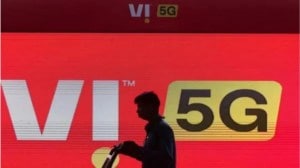Spy satellite problems could affect US terror war
A secret program for developing the next generation of spy satellites is underfunded and behind schedule and could leave the CIA and Pentago...

A secret program for developing the next generation of spy satellites is underfunded and behind schedule and could leave the CIA and Pentagon with gaps in satellite coverage critical to the war on terrorism if the programme cannot be restructured, defence and intelligence officials said.
The delays and funding problems in the program, called Future Imagery Architecture (FIA), come at a time when the nation’s combat and intelligence personnel are more dependent than ever on satellites to track terrorists, detect troop movements and identify nuclear, chemical and biological weapons sites in potentially hostile states such as Iraq, Iran and North Korea.
Unless the problem is fixed, according to one senior intelligence official, current spy satellites could stop working before the first next-generation satellite is launched in the next few years, leaving the country with a gap in coverage.
Defence Secretary Donald Rumsfeld is so concerned about getting the satellite development program back on track that he met Thursday with CIA director George Tenet to review the problem and to discuss how to address it.
The senior intelligence official said a ‘‘reprogramming’’ of about $625 million and possibly as much as $900 million, from other intelligence programs this year should be enough to get the program back on schedule so spy satellite coverage is maintained without interruption.
Tenet is responsible for overseeing the National Reconnaissance Office, which builds and operates spy satellites.
The additional $550 million, an official said, is needed to cover expenses at both agencies that were not adequately budgeted when the contract for developing the new satellite system was awarded to the Boeing Co. several years ago.
The intelligence official denied the satellites under development are much heavier — and thus more expensive to keep in orbit — than Boeing originally proposed.
One senior Pentagon official offered a much more negative assessment, saying the programme most likely faces a ‘‘radical restructuring’’ if it is to avoid being cancelled.
The National Reconnaissance Office operates a fleet of satellites that is thought to consist of three KH-11 Keyhole satellites that take digital pictures, and three Lacrosse satellites that produce radar images. While the Keyhole pictures are of slightly higher quality than radar images, the advantage of radar is that it works at night and through clouds.
The Keyhole and the Lacrosse satellites — school bus-size spacecraft that orbit the Earth at altitudes of 400 to 600 miles — are thought to have the ability to depict objects as small as 10 centimeters in length. While they cannot read license plates, they can tell whether or not a car has a license plate. (LATWP)



- 01
- 02
- 03
- 04
- 05




























